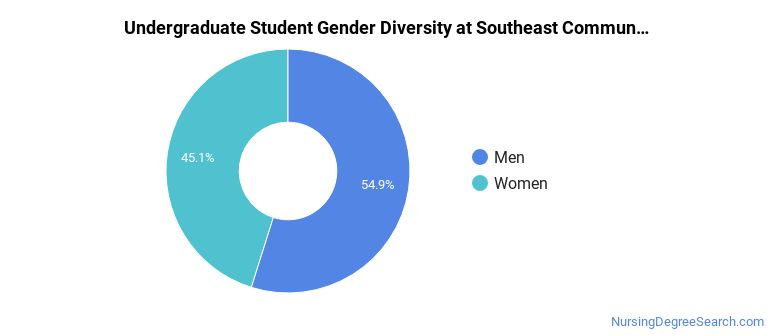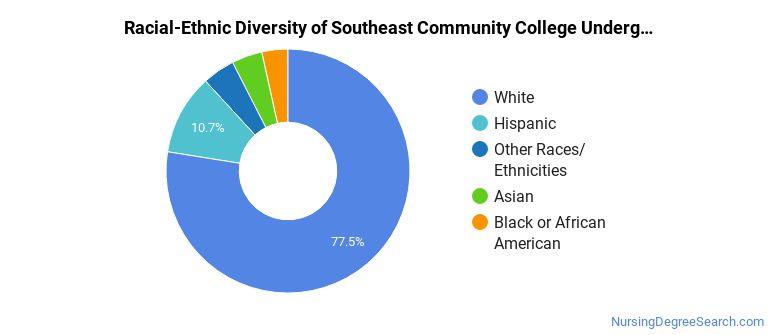Southeast Community College Area Nursing Programs
Located in Lincoln, Nebraska, Southeast Community College Area is a public institution. The location of the school is great for students who enjoy the amenities of city life.
Where Is Southeast Community College Area?

Contact details for Southeast Community College are given below.
| Contact Details | |
|---|---|
| Address: | 301 South 68Th Street Place, Lincoln, NE 68510-2449 |
| Phone: | 402-471-3333 |
| Website: | www.southeast.edu |
How Do I Get Into Southeast Community College?
You can apply to Southeast Community College online at: https://www.southeast.edu/admissions/apply.php
Can I Afford Southeast Community College Area?
Student Loan Debt
While almost two-thirds of students nationwide take out loans to pay for college, the percentage may be quite different for the school you plan on attending. At Southeast Community College, approximately 75% of students took out student loans averaging $1,691 a year. That adds up to $6,764 over four years for those students.
Southeast Community College Area Undergraduate Student Diversity

Gender Diversity
Of the 3,234 full-time undergraduates at Southeast Community College, 55% are male and 45% are female.

Racial-Ethnic Diversity
The racial-ethnic breakdown of Southeast Community College Area students is as follows.

| Race/Ethnicity | Number of Grads |
|---|---|
| Asian | 131 |
| Black or African American | 112 |
| Hispanic or Latino | 345 |
| White | 2,507 |
| International Students | 0 |
| Other Races/Ethnicities | 139 |
Over 29 countries are represented at Southeast Community College. The most popular countries sending students to the school are Australia, Vietnam, and New Zealand.
Southeast Community College Area Nursing Concentrations
The table below shows the number of awards for each concentration.
| Major | Associate’s | Undergraduate Certificate | TOTAL |
|---|---|---|---|
| Licensed Practical/Vocational Nurse Training | 0 | 92 | 92 |
| Registered Nursing | 39 | 0 | 39 |
| TOTAL | 39 | 92 | 131 |
References
*The racial-ethnic minorities count is calculated by taking the total number of students and subtracting white students, international students, and students whose race/ethnicity was unknown. This number is then divided by the total number of students at the school to obtain the racial-ethnic minorities percentage.
More about our data sources and methodologies.
